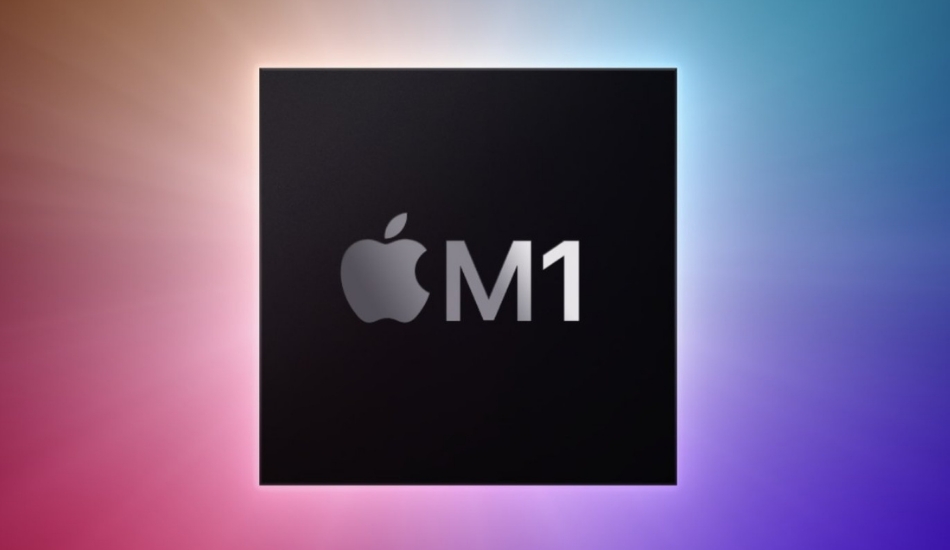The Cupertino based tech company has finally released its newest silicon based chips called the M1, Apple’s first chip designed specifically for the Mac. The most powerful chip Apple has ever created and the first chip designed specifically for the Mac, the M1 is optimised for Mac systems in which small size and power efficiency are critically important.

M1: Features and Specifications
M1 is the first personal computer chip built using 5-nanometer process technology and is packed with 16 billion transistors, the most Apple has ever put into a chip. As per Apple, the chip features the world’s fastest CPU and integrated graphics in a personal computer.

The chip features machine learning performance by Apple with the Apple Neural Engine. M1 delivers up to 3.5x faster CPU performance, up to 6x faster GPU performance, and up to 15x faster machine learning, all while enabling battery life up to 2x longer than previous-generation Macs.
Macs and PCs have traditionally used multiple chips for the CPU, I/O, security, and more. Now with M1, these technologies are combined into a single SoC, delivering a new level of integration for greater performance and power efficiency.
M1 also features a unified memory architecture that brings together high-bandwidth, low-latency memory into a single pool within a custom package. This allows all of the technologies in the SoC to access the same data without copying it between multiple pools of memory, further improving performance and efficiency.
Read More: Apple is ready to switch to Silicon Macs: A worthy move?
The M1 features an 8-core CPU consisting of four high-performance cores and four high-efficiency cores. They are the world’s fastest CPU cores in low-power silicon, allowing photographers to edit high-resolution photos with lightning speed and developers to build apps nearly 3x faster than before, claims Apple. And all four cores can be used together for a boost in multithreaded performance.
M1 also includes Apple’s most advanced GPU. Featuring up to eight powerful cores capable of running nearly 25,000 threads simultaneously, the GPU can handle heavy tasks without any issues. With 2.6 teraflops of throughput, M1 has the world’s fastest integrated graphics in a personal computer, says Apple.
The M1 Chip also brings Apple’s Neural Engine to the Mac, which features a 16-core architecture capable of 11 trillion operations per second. With the Neural Engine, tasks like video analysis, voice recognition, and image processing will have a better level of performance than before.
The chip also features technologies from Apple such as Secure Enclave, Apple’s latest image signal processor, a storage controller with AES Encryption for better SSD performance, low power media encode and decode engines, and An Apple-designed Thunderbolt controller with support for USB 4 and transfer speeds up to 40Gbps.
MacOS Bigsur optimized for M1, Releasing 12th November

Apple has also optimized its MacOS Bigsur software for the new M1 chip so users can experience better performance overall. Similar to iPhone and iPad, the Mac now also instantly wakes from sleep.
The new MacOS Big Sur contains a bunch of design and asthetic changes which it has picked up from the iPhone. There’s a new control centre that will now help you enable DND, change the brightness and other settings available. Apple’s own system apps such as Photos and Mail are also receiving an overhaul.
BigSur not only brings design changes but also brings privacy focused features where you can control which apps can track you and check what types of data the app might collect.
With Big Sur and M1, Mac users can run a greater range of apps. All of Apple’s Mac software is now Universal and runs natively on M1 systems. Existing Mac apps that have not been updated to Universal will run without any issues with Apple’s Rosetta 2 technology.
The new MacOS Bigsur will start rolling out to Macbooks starting from 12 of November and is first MacOS that will support Apple’s M1 chip.
M1: Availability

The M1 chip powers the new MacBook Air, 13-inch MacBook Pro, and the newly announced Mac mini. Apple has also said that the transition to Apple Silicon will take about two years to complete.
On a sidenote, Apple claims that the newer Macbooks with M1 chip offer the longest battery life ever in a Mac. Apple says that its new MacBook Air, which features the M1 chip, can play up to 18 hours of video on a single charge (up from 12 hours on this year’s Intel-powered MacBook Air) and offers up to 15 hours of wireless web browsing on every charge (up from 11 hours previously).

The new MacBook Air also doesn’t need a fan, meaning the laptop should run near silently.
On the other hand, the new 13-inch MacBook Pro offers up to 17 hours of wireless web browsing (up from 10 hours with this year’s Intel-powered MacBook Pro), and 20 hours of video playback (up from 10 hours before).


